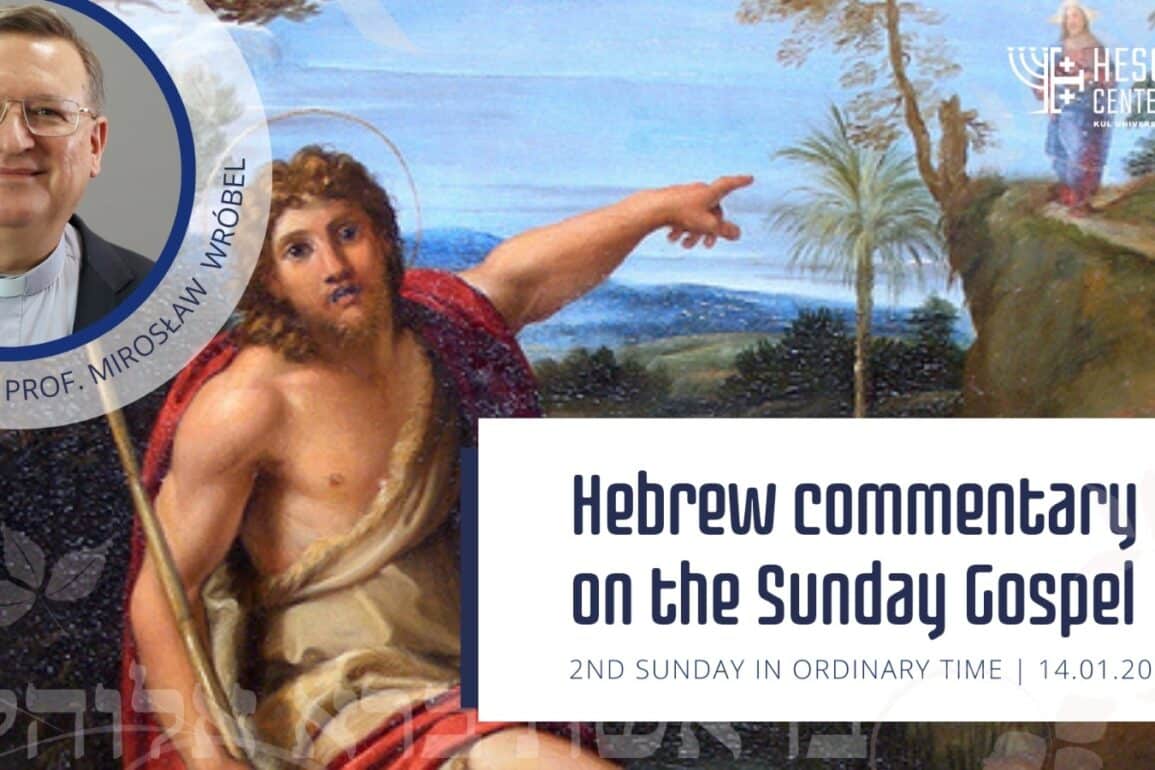In the Gospel scene, John the Baptist, in front of his disciples, bears witness to Jesus calling him “the Lamb of God.” In light of the Hebrew Bible, this title had a profound meaning. What these words meant to the Jews of Jesus’ time and Christ’s first words in the pages of St. John’s Gospel are discussed by the Catholic University of Lublin Rector’s Plenipotentiary for Catholic-Jewish Relations and Research in the Holy Land, Fr. Prof. Mirosław Wróbel, in a commentary for the KUL Heschel Center for Sunday, January 14.
In the Gospel scene, John the Baptist, in front of his disciples, bears witness to Jesus calling him “the Lamb of God.” In light of the Hebrew Bible, this title had a profound meaning. It can reference the lamb Abraham sacrificed in the land of Moria in place of his only son Isaac (Genesis 22). It may also be a reference to the Passover lamb offered in the land of Egypt (Exodus 12) and the lamb-servant of the Lord portrayed by the prophet Isaiah (Isaiah 53:7).
In the further context of John’s Gospel, Jesus dies on the cross as the Lamb who takes away the sins of the world (John 19:34). This is happening at the same time as the offering of the Passover lamb in the Jerusalem temple. The motif of the glorified Messiah – the Lamb of God sacrificed – repeatedly appears throughout the Book of Revelation showing the faith of the early Church.
To his disciples, as they follow him, Jesus poses an essential question: “What are you looking for?” (John 1:38). These are the first words spoken by Jesus in the Fourth Gospel, and therefore, they refer not only to the two disciples who followed Jesus but also to the disciples of every age following the Master of Nazareth. A humble and sincere answer to this question can lead to a profound communion with Jesus and a concrete realization of vocation and mission. Only then can we courageously follow Jesus on the path of holiness and deep immersion in the saving blood of the Lamb.
The Evangelist refers to one of the disciples by his first name – Andrew, Simon Peter’s brother. The other disciple intentionally remains nameless, as each Gospel reader is called to see themselves in the nameless face of the other disciple.
Their question, “Rabbi, where are you staying?” reveals their humility in seeking the truth conveyed to them by the Master of Nazareth. Jesus invites them to follow him: “Come and see.” He asks them on a journey on which he wishes to show them not so much a house made by human hand but the house of the Father who is in heaven. In the later context of the Gospel, Jesus will reveal to his disciples that there are many dwellings in his Father’s House.
Andrew shares his experience with his brother Simon, whom he brings to Jesus. The Master of Nazareth gives Simon the name Kephas, which means “rock” in Aramaic. This indicates the important role of Simon-Kephas in the early Church.
In the sequence of Jesus’ encounter with his first disciples, one can see the importance of faith, openness, and searching by asking questions, setting out on a spiritual journey, and witnessing the encounter with the one who is the Way and the Truth and the Life.










